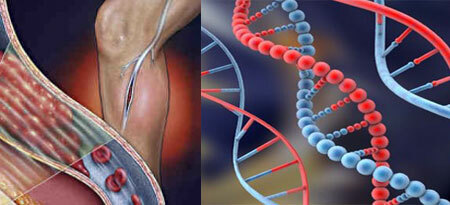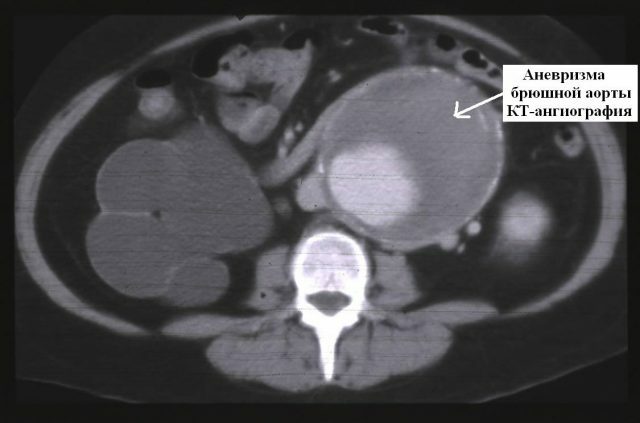What is it? Thrombophilia is a pathology of the circulatory system, manifested in disorders of hemostasis and a tendency to thrombosis. The disease is characterized by multiple thromboses and their relapses. Pathology affects more than 40% of the population, and this figure increases every year.
The formation of thrombi prevents normal blood flow, which leads to life-threatening consequences: extreme manifestations - ischemic stroke and heart attack. The most frequent complications are tissue necrosis and chronic venous insufficiency.
The patient in most cases does not suspect that he has thrombophilia, while in his body does not form a blood clot - a thrombus. This is because the process of blood clotting is violated. To stop any bleeding, our body needs to thicken the blood in this area.
Contents
- 1 Thrombophilia - what is it and how is it manifested?
- 2 Hereditary thrombophilia - genes and factors
- 3 Thrombophilia in pregnancy - risks and actions
- 4 Diagnosis and analysis for thrombophilia
- 5 Treatment of thrombophilia - drugs and diet
- 5.1 Forecast
Thrombophilia - what is it and how is it manifested?

If a person suffers from thrombophilia, the blood clot will exceed the dimensions needed to stop bleeding. In the future, thrombus can increase and completely block the lumen of the vessel.
The appearance of thrombus in the body manifests the following symptoms of thrombophilia:
- Rapid heartbeat - the heart needs more effort to move blood with clots;
- Shortness of breath and shortness of breath( also associated with previous factor);
- Numbness, painful sensation and swelling in the extremities - mainly in the legs and feet, becausethere are often formed vascular clots;
- Unpleasant sensations in the chest during a deep breath;
- Cough with secretion of substances with blood content;
- Multiple pathologies of pregnancy and miscarriages( the first debut of the disease in women can occur during pregnancy).
There are clotting factors and anticoagulant agents in the circulation mechanism. Under normal conditions, their activity is in balance. Thrombophilia is a violation of one of them: the patient either weakened anticoagulant factors, or the activity of clotting factors increases.
Thrombophilia can be congenital and acquired( given the cause of development).If a person does not have genetic pathologies, an increase in blood clotting can develop as a result of:
- vascular trauma;
- diseases of the circulatory system;
- reception of aggressive medications.
There is little chance of acquiring a predisposition to thrombosis, but it increases with certain diseases. Therefore, comprehensive measures are aimed at excluding the development of acquired thrombophilia as a complication of the underlying pathology( for example, against pneumonia, diabetes, etc.).
Hereditary thrombophilia - genes and factors

In most cases, doctors face hereditary thrombophilia, the parent transmits thrombophilia genes to their child. There are several factors that contribute to the propensity to form blood clots:
1. Primary genetic anomaly. An error in the RNA code that programs the structure of proteins. This is a complex pathology that includes the anomaly of prothrombin G 202110A, deficiency of proteins C and S and antithrombin III and mutation Leiden( pathology factor V).
Anomalies can also occur separately.
2. Deficiency of C- and S-prothrombins. In the liver, a protein is synthesized, called prothrombin S.It activates thrombin so that prothrombin S can stop bleeding. Factors of coagulation V and VIII are destroyed, and blood does not form clots.
Insufficient amounts of C- and S-prothrombins lead to increased thrombogenesis.
3. Insufficient amount of antithrombin III.Deficiency of protein is caused by disorders in its synthesis. It is transmitted by an autosomal dominant type, that is, it does not depend on the sex of the parent and the child, is always manifested when transmitted by inheritance( ie, in this pathology there are no healthy carriers of the pathological gene).
The probability of an abnormal gene depends on many factors. There are cases when on human health, its impact will be minimal.
Antithrombin III is one of the most important components of regulation of the mechanism of blood clotting. In combination with thrombin( a protein whose function is to form blood clots) they suppress each other's action. Deficiency of antithrombin III prevents timely inactivation of thrombin, which leads to multiple appearance of clots.
4. Leiden mutation is an anomaly of factor V. Under normal conditions, the fifth factor of blood coagulation is suppressed by the action of protein C. Leiden mutation assumes the stability of factor V to C-pro-protein influences, which stimulates blood thickening.
5. Prothrombin prothrombin. Prothrombin is the stage of the protein that precedes thrombin. Its accelerated synthesis promotes the formation of large blood clots. Consequences of an anomaly of a prothrombin can become a blockage of vessels of heart and a brain that is shown by heart attacks and strokes at young age.
6. Antiphospholipid syndrome. Phospholipids are the components from which the membranes of nerve cells, blood vessels and platelets are composed. If an excessive amount of antibodies is produced in the body, the phospholipids break down and disrupt the functional of cells that participate in the mechanism of blood coagulation and dilution.
Genetic thrombophilia can be caused by several factors, but its manifestations will in any case be the same. They will consist of a violation of blood flow in a specific area of the body or organ with all the ensuing consequences.
Thrombophilia in pregnancy - risks and actions
 Hereditary thrombophilia and pregnancy, in most cases, are compatible. The probability of transmission of the anomaly of the blood coagulation mechanism to an autosomal dominant type child is 50%.According to the autosomal recessive type, it is lower and is 25%, i.e.in generations there may be carriers of the pathological gene, in which the clinical manifestations of the disease are absent.
Hereditary thrombophilia and pregnancy, in most cases, are compatible. The probability of transmission of the anomaly of the blood coagulation mechanism to an autosomal dominant type child is 50%.According to the autosomal recessive type, it is lower and is 25%, i.e.in generations there may be carriers of the pathological gene, in which the clinical manifestations of the disease are absent.
Often, thrombophilia in a future mother is diagnosed during pregnancy. This is due to the fact that during the embryogenesis period, the coagulability of the blood rises, because an additional circulatory circle appears in the woman's body - the placental circulation. Nature has taken care to reduce blood loss in the generic process( with the separation of the placenta).
The main risk for a woman with thrombophilia is miscarriage - the level of blood thickening increases 5 times.
This can occur due to spontaneous abruption of the placenta caused by circulatory problems. Miscarriage is possible as soon after conception, and in later terms.
A woman who observes all the recommendations of doctors is able to bear fruit and give birth with thrombophilia. The normal term for the birth of a child in a woman in labor with such a disease is 35-36 weeks. At this time, premature birth is no longer dangerous for the life of the fetus and the mother.
Thrombophilia has a negative effect on the baby in the womb after the 10th week of embryogenesis, manifested as fetal hypoxia. In the vessels of the placenta microthrombi are formed, which prevent the ingestion of nutrients and oxygen into the body of the child. If there is no treatment for thrombophilia in pregnancy, there is a delay in fetal development or fading of pregnancy.
The second trimester often occurs without complications, and from the beginning of the third, the risk of premature birth increases dramatically. Pregnant women with thrombophilia are assigned regular examination of the coagulation system( coagulogram) and the introduction of modern anticoagulants if necessary.
Diagnosis and analysis of thrombophilia
It is almost impossible to determine thrombophilia by external factors. The analysis on thrombophilia begins with the determination of the level of erythrocytes and platelets in the blood. If the general analysis shows an increase in the number of these cells, then the patient is shown certain tests aimed at an accurate diagnosis.
Other blood counts are also measured:
- The level of D-dimer, the product of decomposition of blood clots, is increased due to an increase in the number of blood clots.
- Analysis on the APTT: in the laboratory conditions simulate the coagulation process. The degree of activity of coagulation factors will be reduced, and the "thrombin time" - the period of formation of the blood clot will also decrease.
- The level of fibrinogen. With excessive coagulability of the blood, its quantity rises.
It will help to decide whether the patient has hereditary thrombophilia, an analysis of the factors in the genetic map. Only a complete picture will allow to consider in detail the genetic factors of thrombophilia:
- The inhibitory mutation of the plasminogen activator is the suppression of the fibrinolysis process. This factor prevents the splitting of thrombotic clots.
- The pathology of methionine metabolism is an increase in the level of homocysteine in the blood plasma. The MTHFR gene encodes an enzyme that converts homocysteine to methionine with the participation of B vitamins.
- An increase in the level of fibrinogen in the blood - a mutation causes an overactive synthesis of fibrin. Globulin under the action of the enzyme thrombin turns into fibrin and promotes thrombogenesis.
- Change in factor II level - mutation in prothrombin coding: replacement of guanine( G) with adenine( A).This does not affect the structure of the protein, but it affects the activity of its synthesis.
- Change in platelet aggregation. Amino acid leucine is replaced by proline, mutations in the integrin-beta protein occur.
These are the most common markers. There are also less common pathologies that a genetic map can identify. The choice of specific analyzes remains with the physician leading the particular patient. You can not assign all studies in a row.they are expensive.
Treatment of thrombophilia - drugs and diet
Treatment for mild degrees of thrombophilia is the use of drugs that dilute blood. The patient is shown such medicines as Acenocoumarol, Warfarin. Also, a special diet is prescribed: food is excluded from the diet, which contributes to blood thickening. It is forbidden to eat green tea, spinach, lettuce, fatty nuts( walnuts, cashews) and liver of any origin.
- If thrombi continues to develop actively, the patient is hospitalized and a therapy based on intravenous administration of unfractionated heparin is administered( using a infusomat - a special device that dosed the drug).
- If the human body, a patient with thrombophilia, does not perceive or react negatively to heparin structures, he is given alternative therapy with enoxaparin sodium or fondaparinux.
Successfully used drugs with acetylsalicylic acid, dipyridamole, pentoxifylline, clopidogrel. In the complex therapy should be present vitamins B, E, folic acid, alprostadil and nicotinic acid.
The goal of thrombophilia treatment is to lyse as much blood clots as possible. The standard duration of therapy is 20-25 days. Individual treatment can extend up to a year or appoint a constant intake of drugs.
In case of acute need, the patient is shown a surgical operation, during which the vessels are "cleaned" of blood clots by hand. After the procedure, it is necessary to take blood thinning medications for a minimum of 2-3 weeks.
Pregnant women are prescribed a similar treatment for thrombophilia, but the number of prescribed medications is much lower. Future mothers are advised to minimize physical activity and maintain a diet.
Forecast of
Thrombophilia is only a predisposition to the formation of thrombi, and if the patient complies with recommendations for nutrition and taking preventive drugs, the risks of stroke and heart attack are minimal.
In the case of pregnant women and those wishing to conceive a child, the probability of a healthy child's birth depends on individual genetic characteristics. Having determined the cause and mechanism of pathology, it is possible to calculate the probability of transmission and manifestation in a child.



